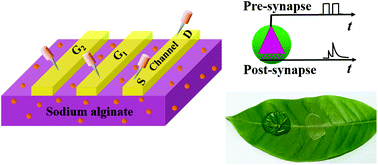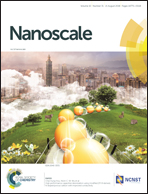Transient security transistors self-supported on biodegradable natural-polymer membranes for brain-inspired neuromorphic applications†
Abstract
Transient electronics, a new generation of electronics that can physically or functionally vanish on demand, are very promising for future “green” security biocompatible electronics. At the same time, hardware implementation of biological synapses is highly desirable for emerging brain-like neuromorphic computational systems that could look beyond the conventional von Neumann architecture. Here, a hardware-security physically-transient bidirectional artificial synapse network based on a dual in-plane-gate Al–Zn–O neuromorphic transistor was fabricated on free-standing laterally-coupled biopolymer electrolyte membranes (sodium alginate). The excitatory postsynaptic current, paired-pulse-facilitation, and temporal filtering characteristics from high-pass to low-pass transition were successfully mimicked. More importantly, bidirectional dynamic spatiotemporal learning rules and neuronal arithmetic were also experimentally demonstrated using two lateral in-plane gates as the presynaptic inputs. Most interestingly, excellent physically-transient behavior could be achieved with a superfast water-soluble speed of only ∼120 seconds. This work represents a significant step towards future hardware-security transient biocompatible intelligent electronic systems.



 Please wait while we load your content...
Please wait while we load your content...